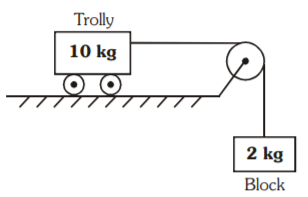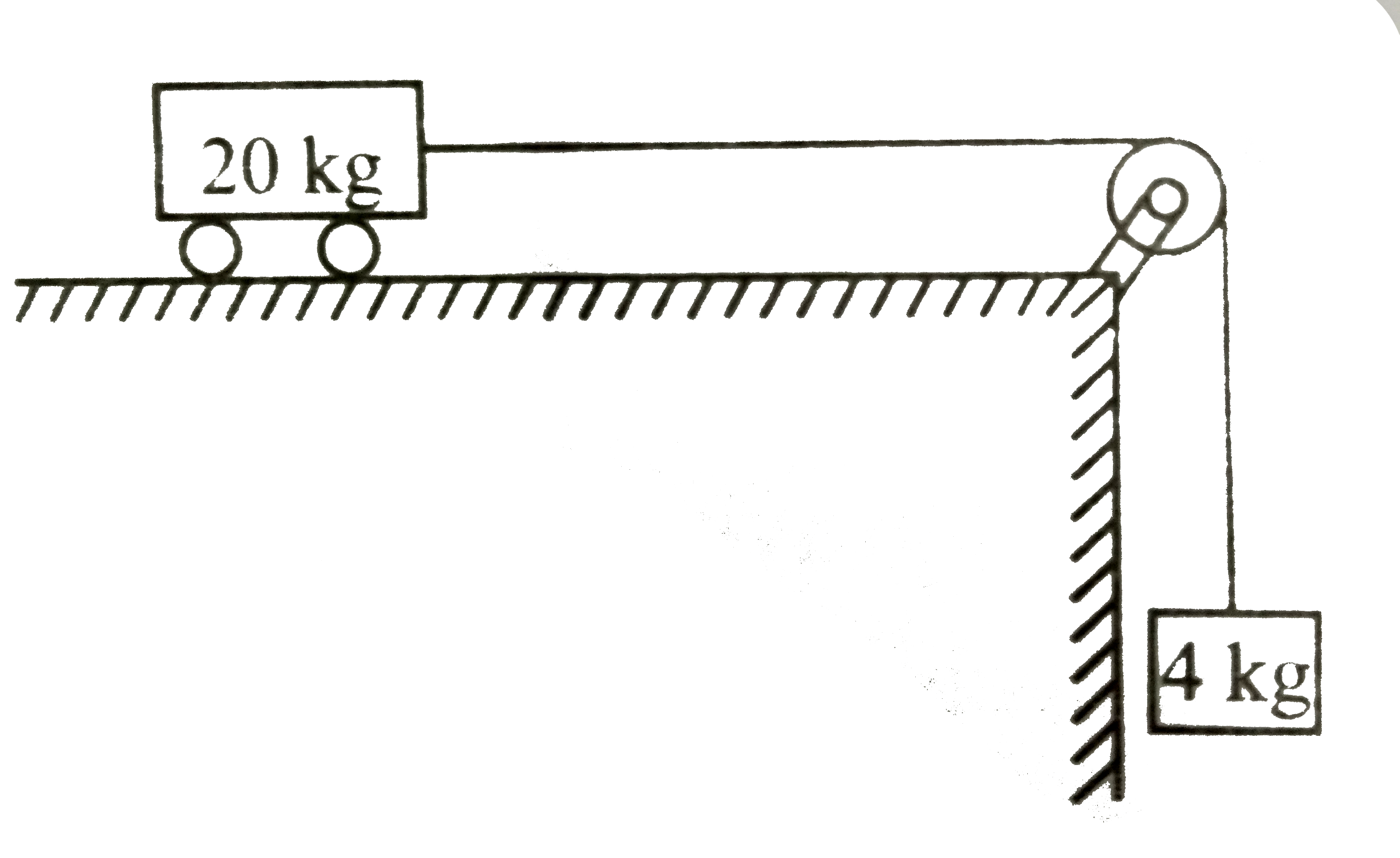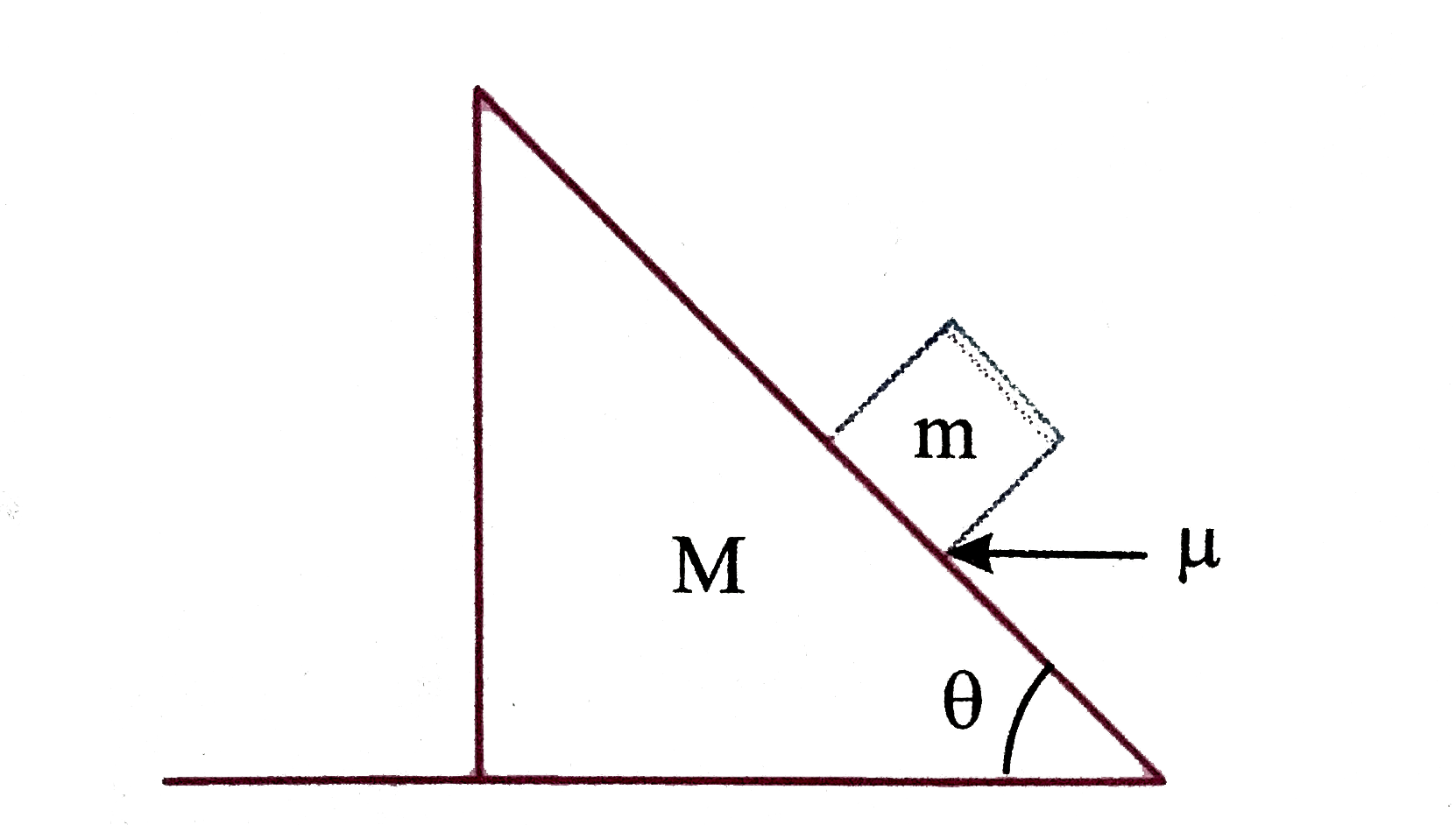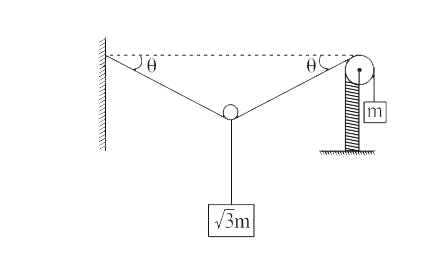Calculate acceleration of block and trolly system shown in figure. Coefficient of kinetic friction between trolly and the surface is 0.05, mass of string is negligible and no other friction exists 
1.25 m/s^2
1.5 m/s^2
1.66 m/s^2
1.00 m/s^2
The correct Answer is:A
Step by step video & image solution for Calculate acceleration of block and trolly system shown in figure. Coefficient of kinetic friction between trolly and the surface is 0.05, mass of string is negligible and no other friction exists by Physics experts to help you in doubts & scoring excellent marks in Class 12 exams.
Updated on:21/07/2023Similar Questions
What is the acceleration of the block and trolley system shown in if the coefficient of kinetic friction between the trolley and the surface is 0 .04 ? What is the tension in the string ? Take g=10ms−2 Neglect the mass of the string
 .
.
View SolutionAcceleration of block A varies with time as shown in figure the value of coefficient of kinetic friction between block A and B is

View Solution
Knowledge Check
A trolley of mass 20 kg is attached to a block of mass 4kg by massless string passing over a frictionless pulley as shown in the figure. If the coefficient of kinetic friction between trolley and the surface is 0.02, then the accderal ion of the trolley and block system is (Takeg=10ms−2)
 A1ms−2B2ms−2C1.5ms−2D2.5ms−2
A1ms−2B2ms−2C1.5ms−2D2.5ms−2
A block system is shown in figure.Frictional force on
View SolutionCalculate angle of friction between wedge and block system is at rest M coefficient of friction between wedge and block.

View SolutionThe system is in equilibrium. Find the angle θ

View SolutionThe coefficient of friction between two surface is μ=0.8. The tension in the string as shown in the figure is

View SolutionBlock B of mass mB=0.5kg rests on block A, with mass mA=1.5kg which in turn is on a horizontal tabletop (as shown in figure) .The coefficient of kinetic friction between block A and the tabletop is μk=0.4 and the coefficient of static friction between block A and blockB is μs=0.6 A light string attached block A passes over a frictionless, massless pulley and block C is suspeneded from the other end of the string. What is the largest mass mc (in kg) that block C can have so that block A and B still slide together when the system is relaced from rest?

View SolutionA block of mass 4kg pressed againest a rought wall by two perpendicular horizontal forces F1andF2as shown in figure Coefficient of static friction between the block and wall is 0.6 and that of kinetic friction is 0.5

For the data of Q 28 ,Find the magnitude of acceleration of the block
View SolutionA block of mass m slides in right angled incliine through as shown in the figure . If the coefficient of kinetic friction between the block and the through is μk , find the acceleration of the block .

View Solution
